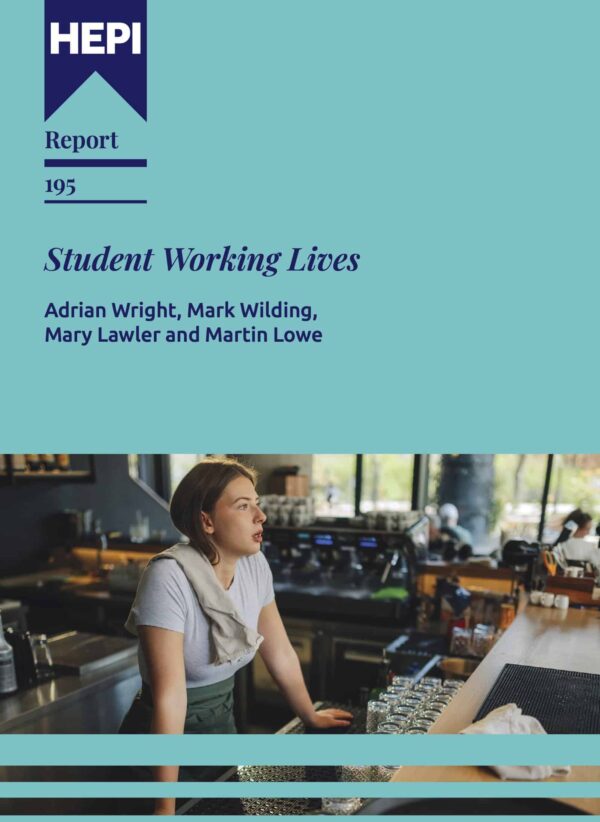From curriculum to career: why universities must lead the education–skills revolution
This blog was kindly authored by Dr. Ismini Vasileiou, Associate Professor at De Montfort University. You can find HEPI’s other blogs on the Curriculum and Assessment Review here and here.
When the Department for Education published its Curriculum and Assessment Review, billed as a Curriculum for Life and Work on 4 November 2025, it signalled more than a curriculum reform – it marked a national conversation about what education is for. For the first time, the school curriculum will explicitly combine knowledge, digital capability, employability, and citizenship – preparing young people not just for exams, but for participation in a complex, data-driven, and interconnected world. Crucially, this is not about replacing education with skills. It’s about redefining education as the process through which skills for life and work are formed. The message is clear: education and skills are inseparable, and the system must now be designed as one continuous journey.
A moment of alignment
This announcement completes the trajectory begun by the Post-16 Education and Skills White Paper (October 2025). Together, these two policy pillars – one focused on schools, the other on tertiary education – outline a vision of coherence across the learning lifecycle. The Post-16 paper’s introduction of V-Levels, simplification of Level 3 qualifications, and expansion of Higher Technical Qualifications now align with the Curriculum for Life and Work, which embeds the early foundations of employability and digital literacy in every pupil’s experience. For the first time in decades, England’s education policy points in a single direction: towards a joined-up system of education that builds character, competence, and confidence. But the success of this vision depends on one missing piece – universities, which sit at the intersection of learning, innovation, and the workforce.
Education, not training
Much of the public debate risks falling into false dichotomies: academic versus vocational, education versus skills. The government’s language – “life and work” – recognises that these are not opposites but continuums. Education remains the intellectual and moral foundation of a healthy democracy. But when delivered holistically, it also nurtures adaptability, creativity, and applied understanding – the very capacities employers now seek. Universities have a critical role in championing this integrated view. Their purpose is not to become training providers but to model what it means for education to produce confident, employable citizens who can learn, unlearn, and relearn throughout their lives.
Lessons from cyber: integration in action
This holistic approach already exists in one part of the education system: the cyber sector.
The Cyber Workforce of the Future white paper (2025) called for a unified skills taxonomy, a shared definition of competence across education and industry, and seamless progression from schools through FE and HE into work. That model aligns almost exactly with what the new curriculum and the post-16 reforms now propose nationally: an ecosystem where education, employability, and innovation are interdependent rather than sequential. In cyber, this has already meant cross-sector curriculum design, embedded work experience, and a culture that treats technical and academic learning as equally rigorous. The next step is to scale that success across all disciplines – from green technologies to healthcare, design, and AI.
Universities at the centre of reform
Universities can make or break this national vision. Their position in the education–skills continuum gives them both responsibility and leverage. To succeed, they must:
- Anticipate the learners of 2028: The first cohort to study under the new curriculum will arrive at university at the start of the next decade. Institutions must adapt admissions, pedagogy, and assessment to students whose schooling will emphasise applied learning, digital literacy, and teamwork.
- Build local and regional partnerships: Collaborating with FE colleges, Skills England, and employers will be essential to map seamless pathways from school to post-16 and higher education.
- Integrate employability into education: Employability should not be treated as a bolt-on service but as an educational principle – part of how critical thinking, problem-solving, and collaboration are taught across disciplines.
- Champion digital confidence: With data, AI, and cyber understanding now fundamental to the new curriculum, universities must ensure every graduate – not only those in STEM – leaves equipped to operate in a digital society.
- Measure outcomes holistically: Success should not be judged solely by employment rates but by how graduates contribute to innovation, community resilience, and lifelong learning.
Risks and responsibilities
Reform at this scale brings challenges. Without alignment across sectors, the new curriculum could risk being a policy of aspiration rather than transformation. Schools may teach for adaptability, only for universities to assess for recall. Equally, the pressure to define “skills for work” must not narrow education’s scope. The aim is not to produce workers but well-educated citizens who can shape the future of work. Universities can protect that balance – ensuring that the education–skills revolution deepens, rather than dilutes, the purpose of learning.
From reform to renewal
The Curriculum for Life and Work represents a rebalancing of the national education story: knowledge still matters, but so do capability, confidence, and contribution. This aligns perfectly with the model already tested through the Cyber Workforce of the Future initiative – where education, employability, and innovation are treated as parts of one system. That approach, proven in a fast-moving digital sector, now provides a template for reform across the entire economy. For higher education, the challenge – and the opportunity – is to lead. By embedding employability as a dimension of education, not its substitute, universities can turn these policy reforms into a sustainable framework for growth, equity, and lifelong learning. The UK has a rare moment of alignment: curriculum reform, post-16 reform, and national skills strategy all pointing in the same direction. If higher education steps forward now, this could become not just another skills agenda, but a true education revolution for life and work.







Comments
Ros Lucas says:
An interesting article specifying how HE must change, but without alternative, wider assessment and learning qualifications and choice to integrate general and employability aspects in the Secondary curriculum, as well as retraining of teachers, changes requured will not happen.
Present oudated learning and assessment is not relevant to life, or employability – the near 1 million NEETS having to be re-educated and up-skilled is evidence something has not been working for too many in Secondary, College or University…
Reply
Replies
Jonathan Alltimes says:
Exactly. We have 81 years of state education and numerous reforms in structures, standards, and curriculum since Thatcher and Josef. Speaking as someone who was educated in the state sector during the 1970s and 1980s, I can safely say as a father of four children, the standards have fallen and the assessments and the curriculum have stagnated.
Reply
Ron Barnett says:
Yet another HEPI blog promoting the skills agenda without any serious attention being given to education.
As is so often the case, there is a doffing of the hat towards the matter and the idea of education but it is perfunctory.
We are told that ‘“skills for work” must not narrow education’s scope’ but what that might look like, one flounders to imagine. Given a study programme oriented to skills, just what might the non-constrained educational components look like? And what, If ANY, are to be the relationships between the skills and the educational components?
It would be so good if the skills proselytisers could spell out some of this on occasions.
(This is not a trivial problem. In an age of ‘cognitive capitalism’, as it is termed in the literature, it is not at all clear that education can withstand the incorporation of higher education into the economy, such that any educational role remains for universities and like institutions.)
Ron Barnett
Reply
Jonathan Alltimes says:
Education finished in 1989 once the Education Reforms Act was enacted and abolishing the Education Act 1944 under Major, Patten, and Shepherd. Education requires the perspective of the teachers, that is, didactics, whereas the language now is all about pedagogy, the perspective of the pupil and student. Only teachers can model education. Skills language and ideas are used as if amoral and is really nothing more than training. The skills language and ideas is also prevalent in higher education, along with pedagogy. Faculty are no longer expected to moral beings communicating a cultural heritage.
Reply
Jonathan Alltimes says:
There is chronic secondary school teacher recruitment crisis for STEM subjects, some of which stretch back decades. Alignment on paper does not mean much when pupils experience gaps in teaching.
Reply
Add comment